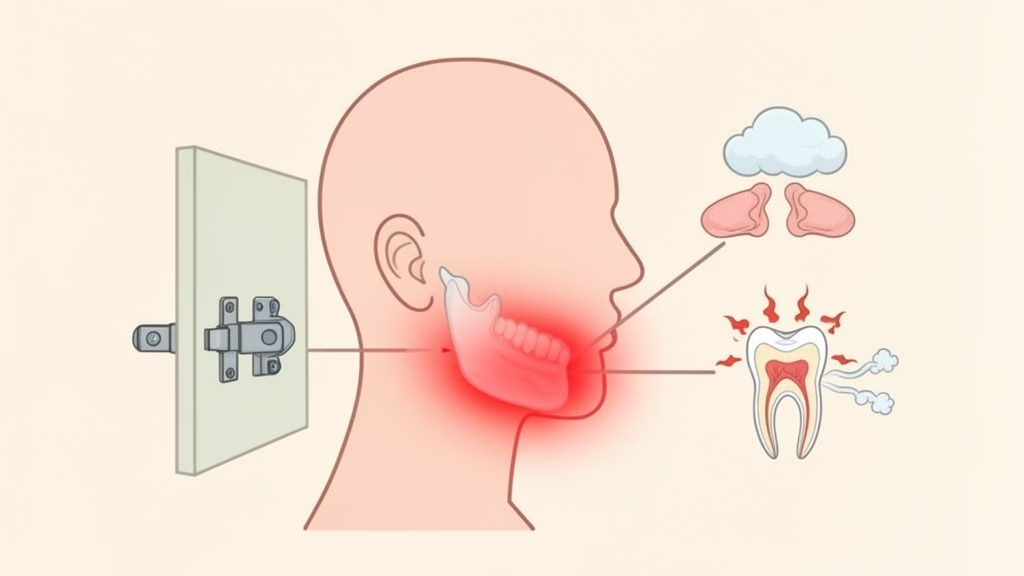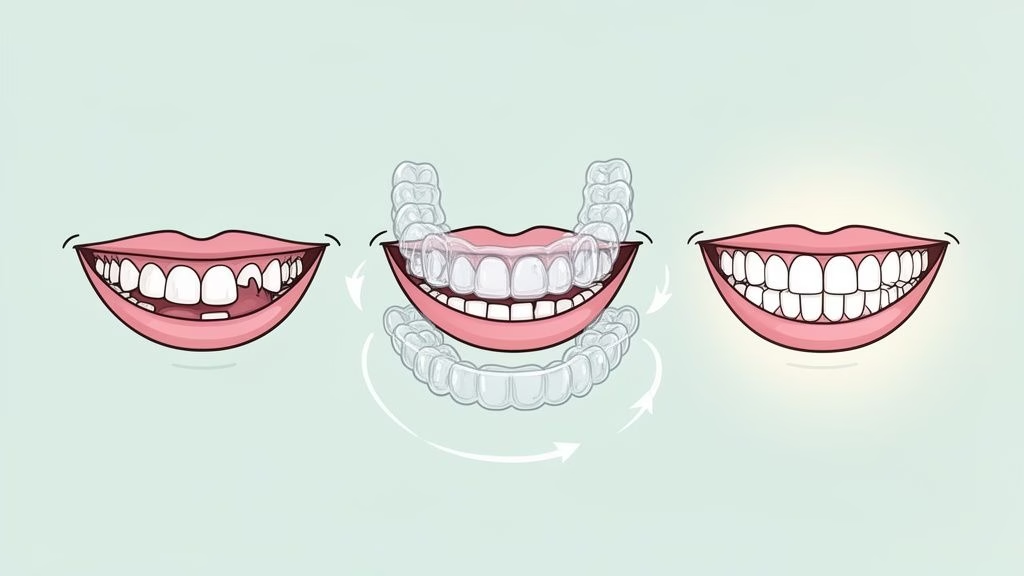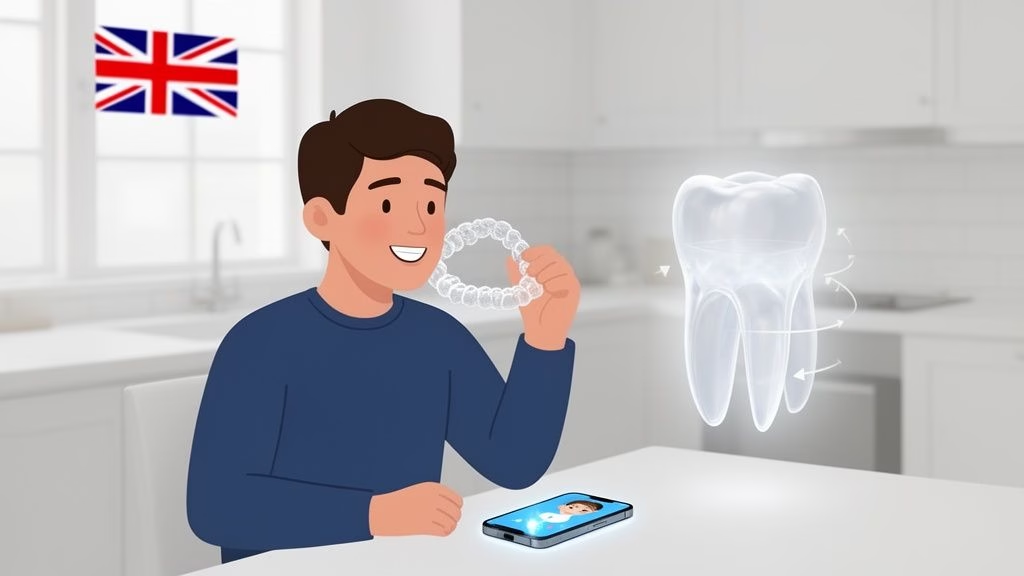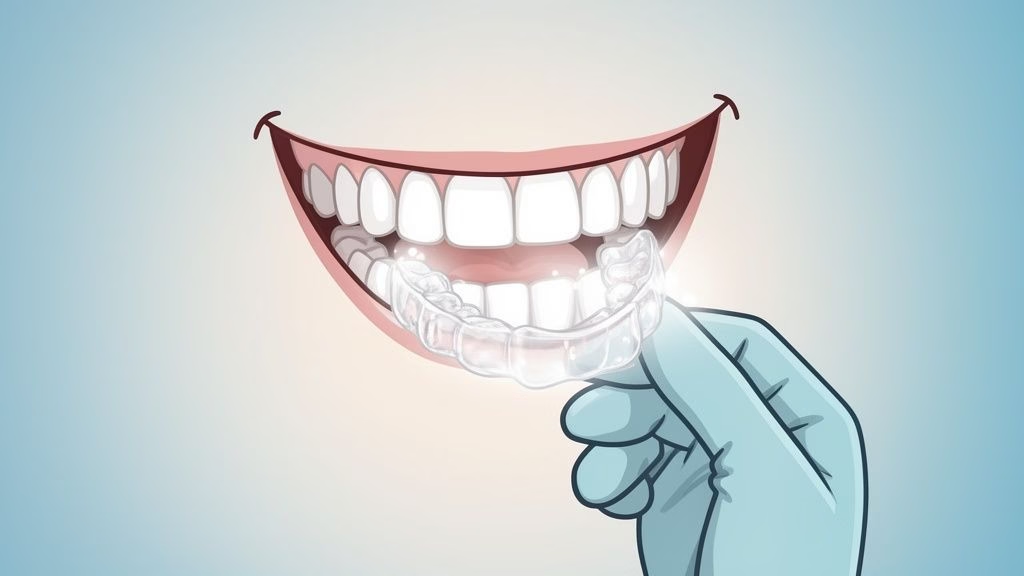Severe Tooth Pain Relief Guide: Expert-Backed Solutions That Actually Work

Understanding the True Causes Behind Severe Tooth Pain
When severe tooth pain strikes, finding its root cause is essential for getting proper relief. While occasional minor discomfort might not indicate serious problems, certain types of tooth pain can signal issues requiring immediate professional attention.
Hidden Triggers of Severe Tooth Pain
Many different issues can trigger toothaches. Here are key causes to watch for:
- Bacterial Infections: These can quickly develop into emergencies, sometimes paired with concerning symptoms like fever and chills. For example, a tooth abscess needs immediate treatment to prevent the infection from spreading.
- Gum Problems and Cavities: While temporary gum soreness may be minor, persistent pain combined with cavities often means it’s time to see your dentist.
Don’t hesitate to get dental care if you experience severe pain, especially when accompanied by other symptoms. Quick action can prevent small issues from becoming major problems.
Recognizing Pain Signals
Different types of tooth pain often point to specific underlying causes:
- Sharp, Stabbing Pain: This typically means exposed nerve endings or recent tooth injury
- Throbbing Pain: Often signals an infection or advanced decay
- Persistent Dull Ache: May indicate early cavity formation or teeth grinding
Understanding these pain patterns helps determine whether home care is enough or if you need professional treatment.
Interpreting the Need for Immediate Action
Some tooth pain requires emergency dental care, particularly when paired with fever, swollen gums, or chills. While temporary relief may come from over-the-counter pain medicine or cold compresses, these measures don’t fix the underlying problem. Only a proper dental exam can identify and treat the real cause.
By learning to read these pain signals and their likely sources, you can make smart choices about your dental care and keep your oral health on track.
Modern Approaches to Pain Management That Actually Work

Getting relief from severe tooth pain requires more than just taking over-the-counter medications. A well-rounded strategy combining multiple methods often provides the best results. Here are some of the most effective pain management techniques used by dental professionals today.
Multimodal Analgesia: A Safer and More Effective Approach
Pain management has evolved beyond relying on a single type of medication. Multimodal analgesia – using different pain relievers together – is now standard practice. For instance, dentists often suggest combining ibuprofen with targeted numbing gels to tackle pain from multiple angles. This approach typically works better than using just one medication and has fewer side effects.
This shift represents a major change in how dentists handle pain relief. Research shows a dramatic decline in opioid prescriptions after dental procedures – from 34.7% in 2012 to zero in 2022. Instead, dentists now favor safer combinations like acetaminophen and ibuprofen. For more details, see this study in JAMA Network Open. This change reflects growing efforts to avoid opioid dependency while still providing effective pain relief.
Targeted Therapies: Addressing the Root Cause of Pain
Rather than just masking symptoms, modern dental practices focus on finding and fixing what’s causing the pain. This might mean performing a root canal to clear up an infection or using specific treatments for nerve pain. By treating the underlying problem, patients often get longer-lasting relief and need fewer pain medications over time.
Incorporating Technology for Enhanced Pain Relief
New technology has improved how dentists manage pain. Low-level laser therapy (LLLT) shows promise in reducing swelling and helping tissues heal. This gentle treatment works well alongside other pain relief methods. Advances in dental numbing techniques and how medications are delivered also help keep patients more comfortable during procedures.
Personalized Pain Management Plans
Since everyone experiences pain differently, dentists now create custom treatment plans for each patient. These plans consider medical history, how well someone handles pain, and what’s causing their tooth pain. A plan might combine several approaches – from medications to simple home remedies like salt water rinses. This personal touch helps ensure each patient gets the most effective treatment for their specific situation.
Natural Remedies That Stand Up to Scientific Scrutiny

While modern dentistry offers excellent solutions for severe tooth pain, many people prefer to start with natural remedies. Scientific research has validated several traditional approaches that can provide real relief. Let’s examine some proven natural options that can help manage tooth discomfort safely and effectively. Remember that these remedies work best alongside professional dental care rather than replacing needed treatment.
Salt Water Rinses: A Simple Yet Powerful Remedy
Salt water rinses have stood the test of time as an effective way to soothe tooth pain. When you dissolve salt in warm water, it creates a hypertonic solution that pulls excess fluid from swollen tissues in your mouth. This natural process helps reduce inflammation and ease discomfort. The rinse also helps clean away food particles and debris that might be irritating your teeth. For best results, gently swish the solution around your mouth for 30 seconds, focusing on the painful area.
Clove Oil: Nature’s Pain Reliever
The pain-relieving power of clove oil comes from eugenol, a natural compound that numbs nerve endings and fights bacteria. Studies show that eugenol works similarly to some over-the-counter pain medications, making it particularly helpful for tooth pain. To use clove oil safely, mix a few drops with coconut oil and apply it gently to the sore area using a cotton swab. The numbing effect typically starts working within minutes and can last for several hours.
Cold Compresses: Reducing Swelling and Pain
A cold compress offers quick, drug-free relief for throbbing tooth pain. The cold temperature constricts blood vessels near the painful area, which naturally reduces swelling and dulls pain signals. To try this method, wrap an ice pack in a thin towel and hold it against your cheek for 15-20 minutes. Take a break for at least 20 minutes before reapplying. This simple technique can provide noticeable relief when used consistently throughout the day.
Turmeric Paste: Ancient Wisdom Meets Modern Science
Recent research supports what traditional healers have long known – turmeric can help ease pain and inflammation. The key compound curcumin acts as a natural anti-inflammatory agent that may reduce dental pain and swelling. Make a simple paste by mixing turmeric powder with water and apply it directly to the sore area. While more studies are still needed, many people find that turmeric offers gentle relief from tooth discomfort. The bright yellow spice pairs well with other natural remedies like salt water rinses.
Recognizing True Dental Emergencies: When Minutes Matter

Tooth pain can be scary, but knowing when it requires immediate care makes all the difference. While some discomfort can be managed at home with over-the-counter remedies, certain situations need professional attention right away. This is especially important since over 50% of U.S. adults skip regular dental visits, which can allow minor issues to become serious emergencies. Learn more about handling toothache emergencies and pain.
Identifying Urgent Dental Issues
Watch for these key warning signs that indicate you need emergency dental care:
- Intense, unrelenting pain: If pain persists despite taking pain relievers, particularly throbbing pain, it often points to infection or major damage
- Visible swelling: Noticeable swelling in your face, jaw, or gums along with pain may signal a serious infection
- Ongoing bleeding: Continuous bleeding after injury or dental work needs immediate evaluation
- Lost tooth: For a knocked-out tooth, getting care within 30-60 minutes greatly improves chances of saving it
- Major breaks or cracks: A severely broken tooth that exposes the nerve or causes significant pain requires quick treatment
- Fever symptoms: When tooth pain comes with fever or chills, it may indicate an infection spreading through your body
Developing an Emergency Dental Care Plan
Having a plan ready before emergencies happen can save precious time and reduce stress:
- Find emergency care: Keep contact information for a 24/7 emergency dental clinic or your regular dentist’s after-hours service easily accessible. Consider services like Toothfairy that offer emergency video consultations with dental professionals.
- Review insurance coverage: Know what emergency procedures your dental plan covers so you can make quick decisions when needed.
- Create an emergency kit: Pack essentials like pain medication, gauze, a small container (for carrying a knocked-out tooth), and emergency dental contacts.
Communicating Effectively During a Dental Emergency
Clear communication helps ensure you get the right care quickly:
- Be specific: Tell the dentist exactly where it hurts, what type of pain you feel, how long it’s lasted, and any other symptoms you notice.
- Share your history: Mention relevant medical conditions, allergies, and current medications that could affect treatment.
- Ask questions: Don’t hesitate to seek clarification about your diagnosis and treatment options. Understanding the situation helps reduce anxiety and leads to better decisions about your care.
With this knowledge of dental emergencies, a solid preparation plan, and good communication skills, you’ll be better equipped to handle urgent dental situations and protect your oral health.
Breaking Down the Numbers: Pain Management Trends and Insights
Pain management has a major impact on dental health outcomes and quality of life. New research provides fascinating insights into how different groups manage tooth pain, what treatments work best, and how healthcare access shapes people’s choices. Understanding these patterns can help you make better decisions about managing severe tooth pain.
How Demographics Shape Pain Management Choices
Where you live and your personal circumstances strongly influence how you handle tooth pain. People in rural areas with fewer dentists often rely more heavily on home remedies and over-the-counter medications. Age also plays a key role – older adults may have different pain tolerance levels and treatment preferences compared to younger people. For instance, seniors might be more hesitant to take certain pain medications due to interactions with other prescriptions.
Exploring Treatment Success Rates and Emerging Trends
Research shows clear patterns in which pain management approaches work best for different situations. Basic over-the-counter pain relievers often help with mild to moderate tooth pain, but more severe cases may require prescription medications or other therapies. New treatment options continue to emerge as our understanding of pain management grows.
Recent studies shed light on how people actually manage tooth pain. Research from British Columbia found that 77.7% of people with toothaches used non-opioid painkillers, while 14.8% used prescribed opioids. The data also revealed that lower income increased the likelihood of opioid use, with a Relative Index of Inequality (RII) of 2.06. See the complete findings here. These numbers highlight why we need better pain management options and more equal access to care.
The Impact of Healthcare Access on Pain Management
Having easy access to dental care makes a huge difference in pain management decisions. People who can readily see a dentist tend to get problems treated earlier, leading to better outcomes. Those with limited access often wait longer to seek care, which can make dental issues much worse. Services like Toothfairy help bridge this gap by providing virtual dental consultations and emergency care guidance. This makes quality dental advice more accessible, especially for those who struggle to get to in-person appointments. Learn more about getting help with severe tooth pain through Toothfairy.
Building Your Personal Prevention Strategy
Dental pain is often avoidable with proper preventive care. A consistent, proactive approach to oral health helps you avoid emergencies and supports your overall wellness. Let’s explore how to build an effective prevention plan that works for your needs.
Establishing a Robust Oral Care Routine
Good prevention starts with daily habits that go beyond basic brushing. The foundation includes brushing for two minutes twice daily with fluoride toothpaste and flossing to remove trapped food particles. Think of this routine like regular maintenance that keeps your teeth healthy and strong.
A fluoride mouthwash adds extra protection by strengthening tooth enamel and fighting decay. For even better cleaning, an interdental brush helps reach spots that regular brushing and flossing might miss, especially between teeth and around dental work.
The Power of Diet and Lifestyle Choices
What you eat directly affects your dental health. Sugary foods and drinks feed harmful bacteria that produce tooth-damaging acids. Choose foods rich in nutrients instead – crunchy fruits and vegetables like apples and carrots can even help clean your teeth naturally as you chew.
Your daily habits matter too. Smoking puts you at much higher risk for gum disease, which often leads to tooth pain. Stress management is also key since many people grind their teeth when tense, causing damage over time.
Regular Dental Checkups: Your First Line of Defense
Professional checkups catch problems early, before they become painful emergencies. During these visits, your dentist can spot and treat issues like small cavities or early gum disease. Consider these appointments like routine car maintenance – addressing small problems prevents bigger, costlier issues later.
Early Warning Signs: Knowing When to Act
Learn to notice subtle changes in your mouth. Watch for increased sensitivity to hot or cold, mild pain after eating sweets, or slight bleeding when brushing. Catching these early warning signs lets you address problems before severe pain develops. If you notice anything unusual, check with your dentist promptly.
Creating a Personalized Prevention Plan
Your oral health needs are unique based on your age, overall health, and existing dental work. Work with your dentist to develop specific recommendations for:
- The best brushing and flossing techniques for your mouth
- Dietary changes that support healthy teeth
- Additional preventive measures based on your risk factors
Need quick dental advice? The Toothfairy app connects you with qualified dentists for virtual consultations, making professional dental care more accessible. Visit their website to learn more about preventing and managing tooth pain.
Last updated on January 28, 2025

Kian Dhinsa
Dr. Kian Dhinsa is a Birmingham-based dental practitioner with a special interest in orthodontics, general dentistry, and and surgery.
He has been recipient of numerous awards, for dental care and digital innovation.
Kian Dhinsa
Dr. Kian Dhinsa is a Birmingham-based dental practitioner with a special interest in orthodontics, general dentistry, and and surgery. He has been recipient of numerous awards, for dental care and digital innovation.





